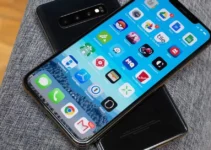Assessing iPhone 15 Sales Trends Compared to Previous Models. As we delve into the recent sales performance of the iPhone 15 series, a clear trend emerges that delineates a shift in consumer preference within Apple’s lineup. This analysis draws from the first full quarter of sales data post-launch, providing a comprehensive view of how the new models are faring against their predecessors.
Elevating Your Aerial Experience: Introducing the DJI Mini 4K Drone
The iPhone 15 Pro Models: A Consumer Favorite
The iPhone 15 Pro and iPhone 15 Pro Max continue to dominate the market, capturing 22% and 23% of total iPhone sales respectively. This strong performance mirrors the demand patterns observed with the iPhone 14 Pro series the previous year, indicating a consistent preference for Apple’s high-end models. The combined sales of these Pro models constitute nearly half of all iPhones sold, underscoring their appeal among technology enthusiasts and professional users.
In contrast, the standard iPhone 15 and the iPhone 15 Plus have experienced a tepid reception. Each securing only a 14% and 9% share respectively, their combined sales are notably lower than their predecessors. This decline suggests that consumers are possibly looking for more than what the basic models currently offer or are pivoting towards more feature-rich alternatives.
When comparing the overall sales of the iPhone 15 family to that of the iPhone 14, there is a discernible dip. The iPhone 15 lineup accounted for 68% of total sales, a decline from the 75% share held by the iPhone 14 family during the same period last year. This shift highlights a potential saturation in the market or a growing consumer inclination towards older models which may offer better value following price adjustments post-new releases.
Market Dynamics and Consumer Behavior
The trend toward higher-end models may reflect a broader market dynamic where consumers are willing to invest in premium features, such as advanced cameras and faster processors, which are typically emphasized in Pro models. Furthermore, the economic context in which these devices are being sold could be influencing purchasing decisions, with consumers opting for models that promise longer relevance through better specifications.
Long-Term Implications for Apple
For Apple, these trends could dictate strategic shifts in future product releases. There may be a need to enhance the appeal of the standard models by integrating select premium features that can attract a wider audience. Moreover, Apple might need to reassess its pricing strategy to better compete in a highly saturated market where consumers are increasingly price-sensitive.
Conclusion
In conclusion, the iPhone 15 series illustrates a complex interplay of consumer preference, economic considerations, and technological advancements. While the Pro models continue to perform robustly, the standard and Plus models face challenges that could spur significant changes in Apple’s approach to its future smartphone offerings. Understanding these trends is crucial for predicting the trajectory of the iPhone’s evolution and its impact on Apple’s standing in the global smartphone market.



